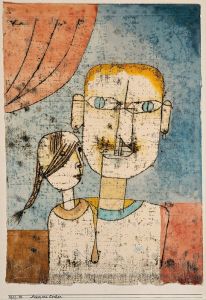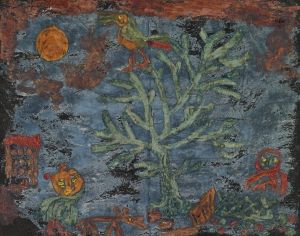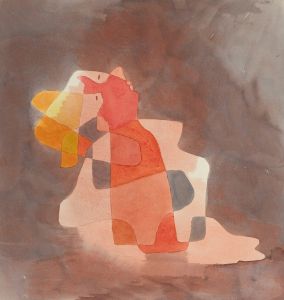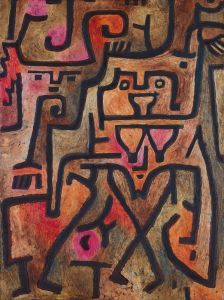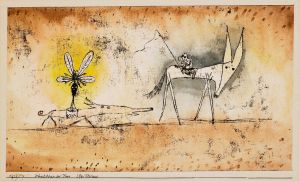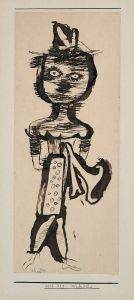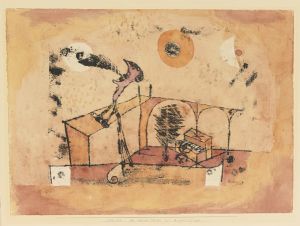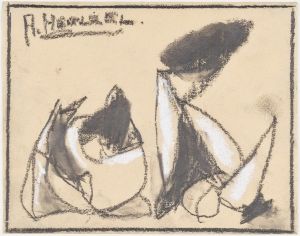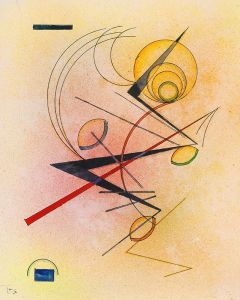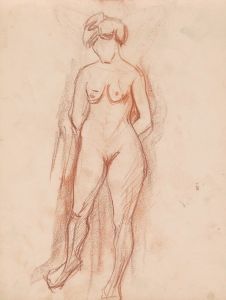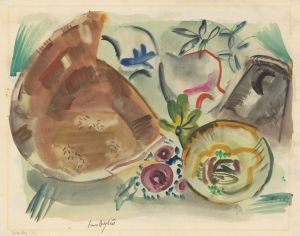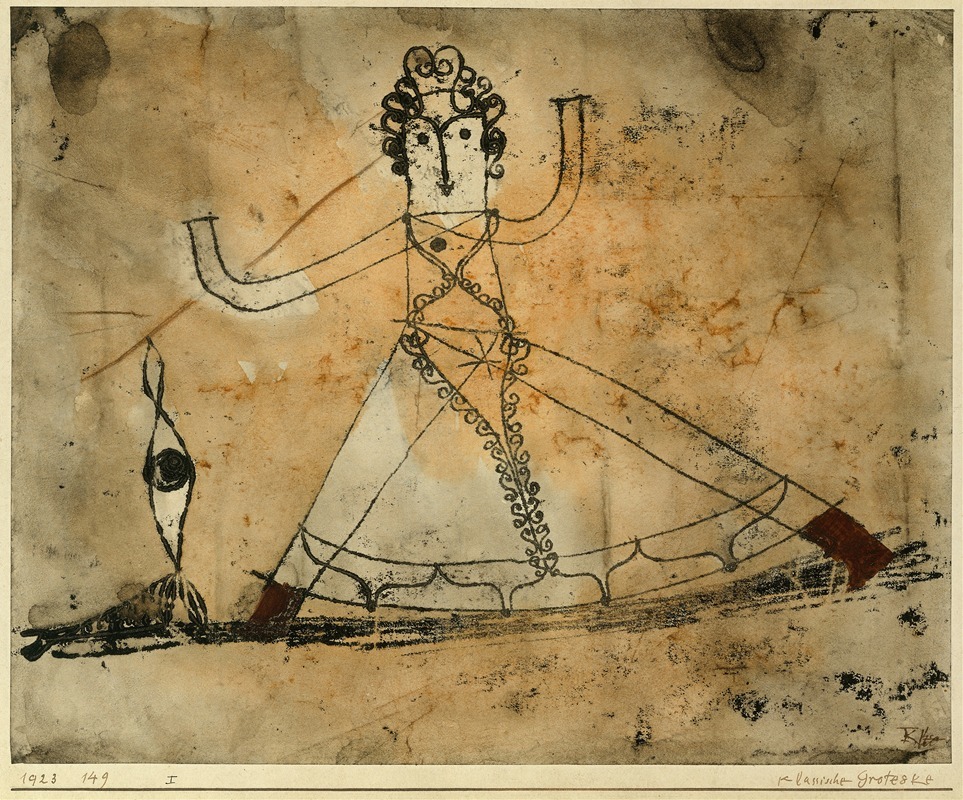
Classical Grotesque
A hand-painted replica of Paul Klee’s masterpiece Classical Grotesque, meticulously crafted by professional artists to capture the true essence of the original. Each piece is created with museum-quality canvas and rare mineral pigments, carefully painted by experienced artists with delicate brushstrokes and rich, layered colors to perfectly recreate the texture of the original artwork. Unlike machine-printed reproductions, this hand-painted version brings the painting to life, infused with the artist’s emotions and skill in every stroke. Whether for personal collection or home decoration, it instantly elevates the artistic atmosphere of any space.
Paul Klee, a Swiss-born artist and influential figure in the early 20th-century art world, is known for his unique style that blends elements of expressionism, cubism, and surrealism. One of his notable works is "Classical Grotesque," which reflects his innovative approach to art and his interest in exploring the boundaries of visual expression.
"Classical Grotesque" is a painting that exemplifies Klee's fascination with the interplay between the whimsical and the structured. Klee often drew inspiration from a variety of sources, including music, nature, and his own imagination, which is evident in this work. The painting features a composition that combines abstract forms with a sense of humor and irony, characteristic of Klee's style.
Klee's work is often noted for its use of color and line, and "Classical Grotesque" is no exception. The painting employs a muted color palette, with subtle variations that create a sense of depth and movement. The lines in the painting are both fluid and precise, demonstrating Klee's mastery of technique and his ability to convey emotion and narrative through simple forms.
The title "Classical Grotesque" itself suggests a juxtaposition of the traditional with the bizarre, a theme that Klee explored throughout his career. This duality is reflected in the painting's composition, where classical elements are distorted and reimagined in a playful manner. Klee's work often challenges the viewer to reconsider preconceived notions of beauty and form, encouraging an appreciation for the unexpected and the unconventional.
Klee was a member of the Bauhaus school, where he taught alongside other prominent artists such as Wassily Kandinsky and László Moholy-Nagy. His time at the Bauhaus influenced his artistic philosophy, emphasizing the integration of art and design and the importance of experimentation. "Classical Grotesque" can be seen as a product of this environment, where Klee was free to explore new ideas and push the boundaries of traditional art forms.
Throughout his career, Klee produced a vast body of work, with over 9,000 pieces to his name. His art is characterized by its diversity and innovation, and "Classical Grotesque" is a testament to his ability to blend different styles and influences into a cohesive and engaging piece. Klee's legacy continues to inspire artists and art enthusiasts around the world, and his work remains a subject of study and admiration.
In summary, "Classical Grotesque" by Paul Klee is a painting that captures the essence of his artistic vision. Through its combination of abstract forms, muted colors, and playful composition, the work exemplifies Klee's ability to challenge and delight viewers. As with much of Klee's art, "Classical Grotesque" invites interpretation and reflection, making it a significant piece in the history of modern art.





